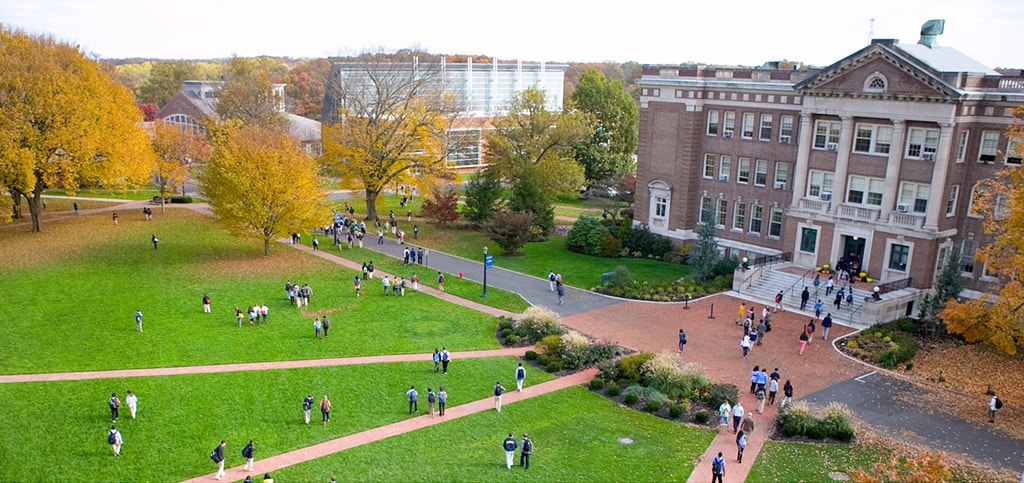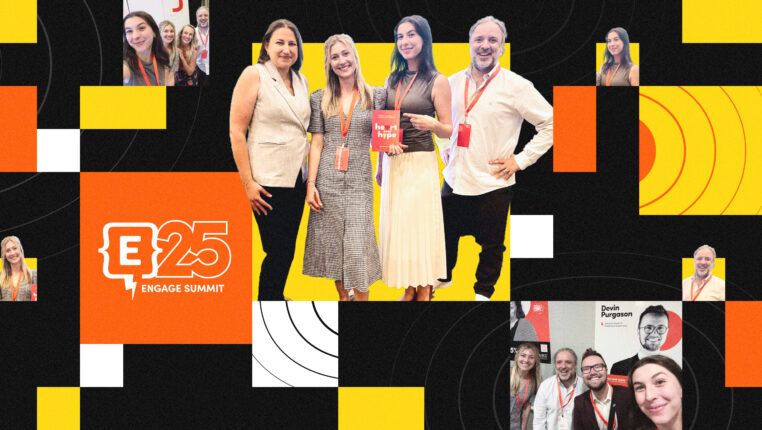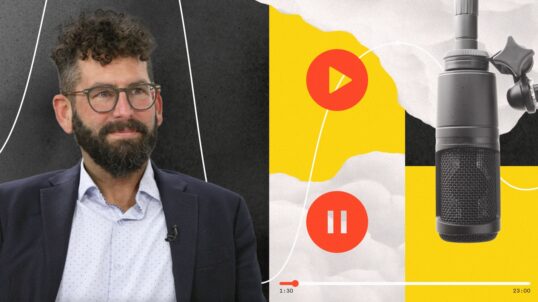Choosing a college or university is one of the first major life decisions many of us make. Not only does it impact the next four years of your life, but possibly the next 50. In days past, this process consisted mostly of leafing through college viewbooks and visiting the campus in person. Today, high schools students are faced with an abundance of online resources and information to help aid in their decision making process.
To get a better idea of which sources of information are most influential to students choosing a college in the digital age, we talked with Libbey, a senior at The Peddie School, a private secondary school in Hightstown, NJ. We wanted to know how Libbey started her college search, what forms of communication she enjoyed receiving from colleges and universities, and how she ultimately made the decision that Wellesley College was the place for her.
In the beginning
When beginning her college search process, the first thing Libbey did was talk to her parents and college counselor about what area of the country she wanted to go to school in. “I thought that would help me narrow things down. I decided to stay on the East Coast,” said Libbey.
Taking the advice of her older cousin who had recently gone to college, Libbey then decided to compare East Coast schools using The Princeton Review website. “[My cousin] showed me around it when she was looking for colleges, so that felt safe to me,” said Libbey. She admits to using the categorical rankings on the site to rule out schools listed for things such as “biggest party school,” and to focus in on schools rated for “best college newspaper” or “best food.” For Libbey, rankings pertaining to student life on campus were more important when making her decision than those associated with the prestige of the school.
Libbey’s college counselor also introduced her to other websites and ranking systems that match high school students with colleges based on factors such as test scores and GPA. In particular, she recalls using Niche, Big Future, and Unigo to further research her college options. “I liked [websites] that would match me to schools based on my profile and where I was looking to go to school geographically,” she said.
Narrowing down the options
After some preliminary research, Libbey felt she had a pretty good idea of her top choices. “When I visited my top five school websites, I liked looking at the design of the website, because it shows how thoughtful they were going into it,” said Libbey.
As a tour guide at her high school, Libbey understands how schools market themselves better than most of her classmates. “I feel like it’s a lot of the same information,” she said. One thing that stood out to Libbey was schools that offered the option to take a virtual tour. “For me, campus tours are about getting a feel for both the campus and classrooms,” she said. Because her parents would only let her take trips to schools if there were other schools she was interested in nearby, Libbey turned to virtual tours to fill in the gaps for schools she wasn’t able to make it to in person. Due to the thorough nature of virtual tours at the University of Miami and Kenyon College specifically, Libbey was able to experience the campuses in a way that made her feel comfortable applying to both schools without actually visiting in person.
Along with online research and scheduling tours of her top schools, Libbey also took the opportunity at college fairs to sign up for email alerts from schools she was particularly interested in. “I really appreciated the emails that I signed up for specifically, but I would also receive emails from random schools that I think got my email address from taking the SAT and PSAT,” said Libbey. “I don’t really think those made me more interested in schools I hadn’t heard of,” she said.
Unsolicited emails didn’t pique her interest, but Libbey does remember emails she opted into. “I really loved the emails from the University of Chicago and Kenyon College,” she said. “I thought they were really creative.” She even remembers a specific example from the University of Chicago mentioning drinking pumpkin spice lattes with Darth Vader. Libbey said the language in that email “felt genuine,” rather than them trying too hard to be hip and cool. These are the things that make colleges stand out to prospective students swimming in a sea of information.
Speaking of information, what additional information did Libbey seek out from schools online? Liking her top choices’ Facebook pages was one way she received regular updates. Although she’s since made her college decision, Libbey said she still enjoys getting updates from Barnard College in particular. “I liked Barnard’s Facebook page because it wasn’t completely devoted to promoting the school itself,” she said. Rather than posting purely self-promotional content, Libbey liked that Barnard shared links to interesting news articles from sources such as the New York Times. These types of posts helped Libbey identify with Barnard’s values and figure out if they matched with her own. As for other popular social media channels such as Twitter and Instagram, Libbey doesn’t have a Twitter account, and didn’t think to check out what schools were posting on Instagram, but wishes she had.
Making an early decision
What helped solidify Libbey’s choice to apply early decision to Wellesley College in Boston? “I spent a lot of time aimlessly Googling the colleges I was interested in,” she said. Before making her decision, she spent countless hours looking up acceptance rates, rankings, and even scouring the news for any mention of her top choices. Admitting it was a bit obsessive, she said she would spend a lot of time on the schools’ websites “trying to find out what made them different.”
Did all of her online research pay off? Yes, seeing as Libbey found a lot of information that ultimately helped her make the final decision to apply early decision to Wellesley. “I thought their traditions were really unique,” she said. It wasn’t the dorms or the food that sold her on Wellesley, but the long-held beliefs and traditions that make the College what it is today. Not always easy to come by, this information was crucial to Libby’s decision-making process, but admittedly took some digging on her part.
In addition to information on long-standing traditions, Libbey said she enjoyed reading honest student testimonials and articles. She was hesitant to trust posts that sounded like they came directly from the school’s marketing department. “If there was a mix of lukewarm ideas or [posts about] people wanting to make the campus better, I’d be more inclined to believe the positive reviews too,” she said.
The key takeaway from our conversation with Libbey is that schools can’t afford to ignore their online presence. In today’s digital age, prospective students begin and end their college search process on the internet. What will students find when they Google your college or university? Hopefully the information they’re seeking, in a way that’s intuitive and easy to navigate to, rather than a lackluster online presence devoid of the depth and originality prospective students are looking for.
Do you have a web project you’re currently working on? eCity Interactive has partnered with numerous colleges and universities to create compelling websites that attract and engage prospective students. Give us a shout to learn more about how we can help.




